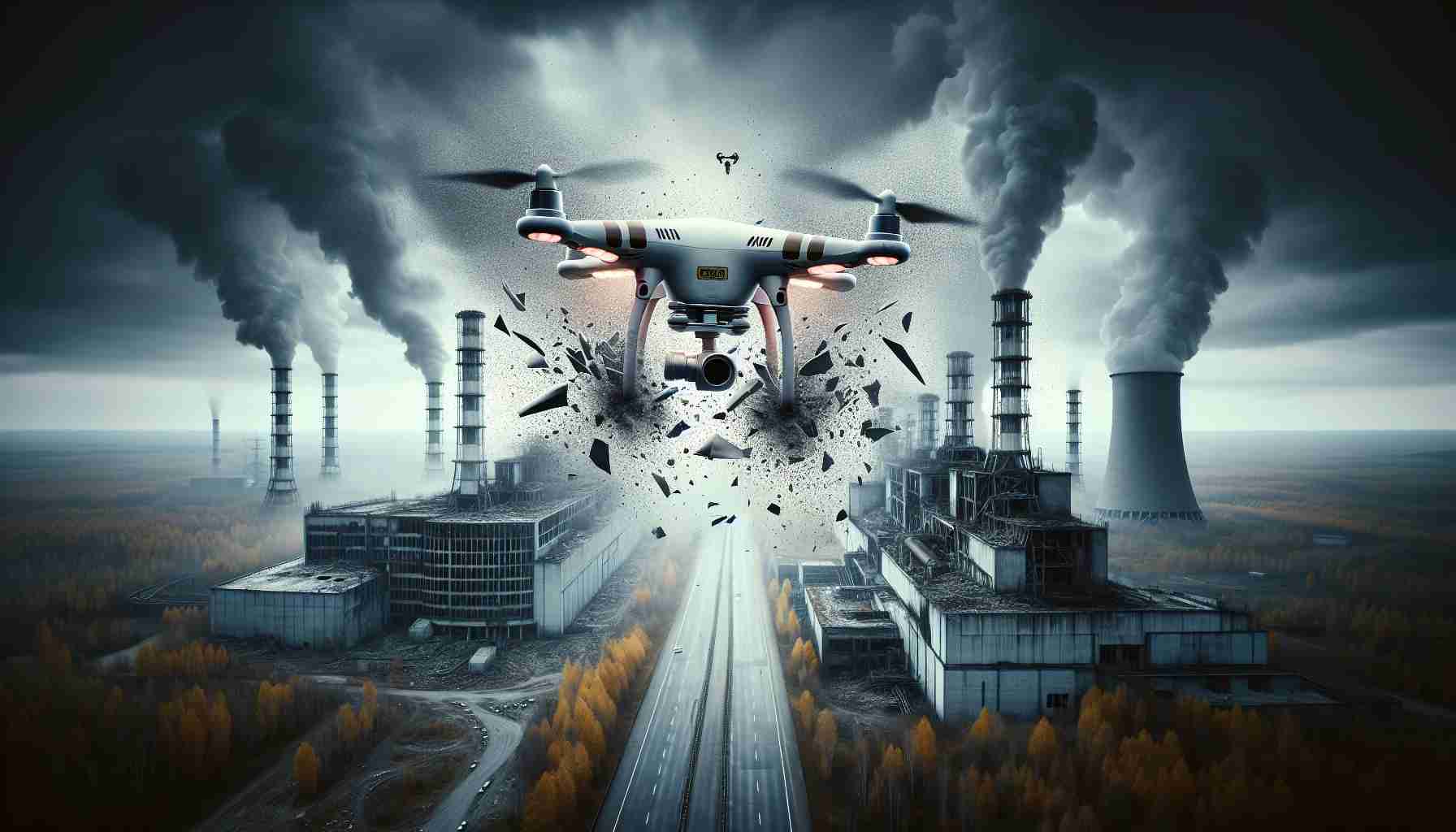- Europe is once again tense after an explosion near Chernobyl, attributed to a Russian drone strike.
- The drone allegedly damaged the reactor’s outer shell, though thankfully, no radiation leak has been reported.
- The incident highlights ongoing geopolitical tensions and the psychological impact of conflict in the region.
- U.S. Vice President JD Vance is set to meet Ukraine’s president in Germany, focusing on potential peace talks.
- Chernobyl symbolizes the thin line between conflict and resolution, emphasizing the complexities of pursuing peace.
- The event serves as a reminder of the enduring echoes of history and the challenges of achieving lasting peace.
A cloud of tension draped over Europe once more as the echo of an explosion reverberated around Chernobyl’s infamous nuclear plant. Ukraine charged that Russia deployed an explosive-laden drone, transforming the historic site into the latest flashpoint in the ongoing conflict. The drone, slicing through the air with silent menace, reportedly damaged the outer shell of the reactor, a chilling reminder of the plant’s past. Yet, to the world’s collective relief, reports suggest no trace of radiation leakage.
The incident paints a vivid picture of the fraught geopolitical landscape that most had hoped would be left in history books. This haunting act seems designed as much for its psychological impact as for any strategic gain, forcing the international community to confront the ongoing escalation with renewed urgency.
Meanwhile, a diplomatic backdrop unfolds as Vice President JD Vance prepares to meet with Ukraine’s president in Germany. Against a tapestry of heightened nerves and anxious anticipation, discussions of U.S. involvement in peace talks loom large. Both leaders find themselves perched at a critical juncture, striving to weave a tapestry of diplomacy amid a sea of uncertainty.
Today, Chernobyl’s ghostly silence stands witness to a precarious balance, a stark emblem of the thin line between tension and resolution. As world leaders grapple with a crisis that shuns simple solutions, the unfolding drama underscores a stark truth: the shadow of history does not easily release its grasp, and peace requires more than merely surviving the specters of the past.
How Chernobyl’s Legacy Continues to Echo in Modern Geopolitics
How-To Steps & Life Hacks: Preparing for Nuclear Safety
In light of recent events at Chernobyl, there are essential steps individuals and communities can take to enhance nuclear safety awareness:
1. Educate Yourself and Others: Understand the basics of nuclear safety and radiation. Resources from the International Atomic Energy Agency (IAEA) provide comprehensive information.
2. Emergency Preparedness Kits: Keep a kit that includes potassium iodide tablets, a first aid kit, bottled water, and a battery-powered radio.
3. Community Drills: Participate in local emergency drills and encourage your community leaders to organize regular preparedness exercises.
Real-World Use Cases: Technology in Diplomacy
Drones, like the one reportedly used in the Chernobyl incident, are increasingly becoming tools in modern diplomacy:
– Surveillance and Security: Drones aid in monitoring borders and critical infrastructure.
– Negotiation Tools: High-definition imaging can offer evidence in diplomatic negotiations about territorial disputes.
Market Forecasts & Industry Trends: Drone Technology
The drone industry is projected to hit $63.6 billion by 2025, driven by defense, surveillance, and commercial applications. With increasing geopolitical tensions, investment in counter-drone technologies is also on the rise.
Reviews & Comparisons: Drone Capabilities
Russia’s alleged use of an explosive-laden drone at Chernobyl is part of a broader trend towards militarized UAVs (Unmanned Aerial Vehicles). Here’s a comparison:
– Military UAVs: Typically equipped with advanced navigation systems and payloads designed for precision targeting.
– Commercial Drones: Often focus on imaging and logistics but are rapidly integrating AI for autonomy.
Controversies & Limitations: Drone Warfare
The use of drones in warfare is controversial due to:
– Civilian Casualties: Drones can lead to unintended casualties.
– Lack of Transparency: Many military operations via drones aren’t disclosed to the public.
Features, Specs & Pricing: Drones in Conflict Zones
Drones used in military applications, such as the Bayraktar TB2, feature:
– Long Flight Duration: Up to 27 hours.
– High Altitude Operation: Can operate up to 25,000 feet.
– Price: Approximately $5 million per unit.
Security & Sustainability: Nuclear Site Protection
Security protocols for nuclear sites include:
– Surveillance Systems: Advanced sensor networks for motion detection.
– Physical Barriers: Reinforced structures to withstand explosions.
– Sustainable Practices: Using renewable energy to power protective systems to reduce dependency on infrastructure.
Insights & Predictions: Future of Nuclear Security
Experts predict a greater emphasis on:
– Collaboration: International alliances to secure nuclear facilities.
– Technological Integration: AI for real-time threat detection and response.
Tutorials & Compatibility: Drone Jamming Technologies
Counter-drone technology tutorials:
– Signal Jamming: Use frequency-specific jamming devices to disrupt drone controls.
– Geo-fencing: Implement software that creates no-fly zones.
Pros & Cons Overview: Drone Use in Conflict
Pros:
– Reduce risks to human soldiers.
– Can reach inaccessible or dangerous zones.
Cons:
– High civilian casualty risk.
– Can escalate conflicts.
Actionable Recommendations
1. Advocate for Peace Talks: Support diplomatic efforts aiming at reducing tensions.
2. Stay Informed: Follow updates from credible sources like BBC for the latest in geopolitical shifts.
3. Community Engagement: Like safety drills, encourage community discussions on nuclear safety and geopolitical understanding.
By understanding the complex interplay of technology like drones in geopolitical disputes, nations and their citizens can better prepare for the challenges ahead.




















